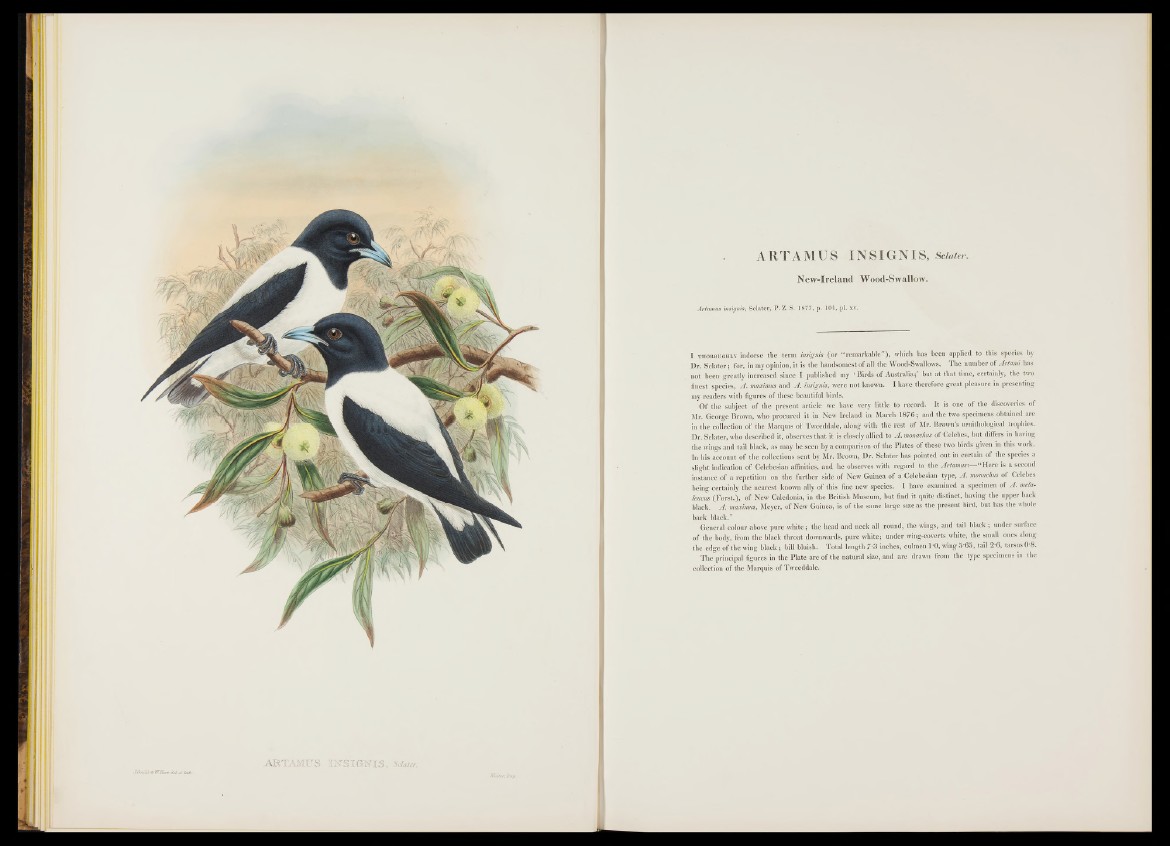
■ARTAMUS IN'S IGNIS, Sdaier.
ARTAMUS INSIGNIS, Sclater.
New-Ireland Wood-Swallow.
Artamus insignis, Sclater, P. Z. S. 1877, p. 101, pi. xv.
I t h o r o u g h l y indorse the term insignis (o r “ remarkable”) , which has been applied to this species by
Dr. S c la te r; for, in my opinion, it is the handsomest o f all the Wood-Swallows. T h e number of Artami has
not been greatly increased since I published my ‘ B irds o f Australia;’ but at that time, certainly, the two
finest species, A . maximus and A . insignis, were not known. I have therefore great pleasure in presenting
my readers with figures of these beautiful birds.
Of the subject o f the present article we have very little to record. I t is one o f the discoveries of
Mr. George Brown, who procured it in New Ireland in March 1 876; and the two specimens obtained are
in the collection of the Marquis o f Tweeddale, along with the rest o f Mr. Brown’s ornithological trophies.
Dr. Sclater, who described it, observes th at it is closely allied to A. monachus o f Celebes, but differs in having
the wings and tail black, as may be seen by a comparison o f the Plates of these two birds given in this work.
In his account o f the collections sent by Mr. Brown, Dr. Sclater has pointed out in certain o f the species a
slight indication o f Celebesian affinities, and he observes with regard to the Artamus:*—'“Here is a second
instance o f a repetition on the further side o f New Guinea of a Celebesian type, A. monachus o f Celebes
being certainly the nearest known ally o f this, fine new species. I have examined a specimen of A. mela-
leucus (F o rs t.), o f New Caledonia, in the British Museum, but find it quite distinct, having the upper back
black. A. maximus, Meyer, o f New Guinea, is of the same large size as the present bird, but has the whole
back black.”
General colour above pure wh ite; the head and neck all round, the wings, and tail black ; under surface
of the body, from the black throat downwards, pure white; under wing-coverts white, the small ones along
the edge o f the wing b lack ; bill bluish. Total length 7 3 inches, culmen 1*0, wing 5*65, tail 2-6, tarsus 0 ‘8.
The principal figures in the Plate are o f the natural size, and are drawn from the type specimens in the
collection of the Marquis of Tweeddale.